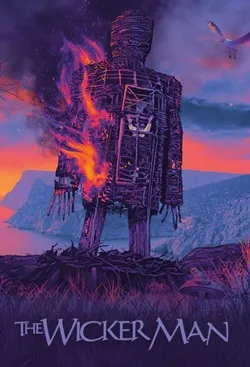
This movie is a remarkable achievement. By all definitions, it appears small: there is little here in the way of special effects, although there are elaborate May Day costumes and the famous image of the wicker man at the end of the film.
Given that it is only around 90 minutes long and the film is quite explicit about what takes place, it strikes me as dense with meaning: although it is thematically illegible to me. What, exactly, is Robin Hardy trying to say here? Is he feeding into the wave of Christian paranoia and Satanic panic that would roar across the United States (and elsewhere) a decade later? Or, is this a social critique of the 1960s, and what we lost with the end of traditional ways across the Western world?
Is it a regressive film, or does it say something positive about the end of conservative belief? Can we read the film as patriarchal, with women filling little role other than that of sacrifice? If so, this would push against the current view of paganism as often being more feminist than Abrahamic faiths.
Regardless of how we read it, the movie feeds on the uncanny. This village could be anywhere, and yet, it’s so different, so unusual, and so other that it is hard not to recoil with discomfort. The film can only described as “chilling,” and it’s folk horror at its very best.
Midsommar (2019) was an outstanding film, and it was–before seeing this–one of my favorite horror movies ever made, simply because how uncanny the movie was. But, I think The Wicker Man might even be better.